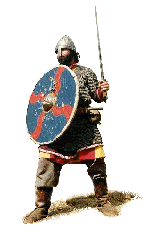|
What is your favorite Outer Space Movie? 
Forbidden Planet is a 1956 science fiction film and a subsequent novelization by W.J. Stuart. The film features a number of Oscar-nominated special effects, groundbreaking use of an all-electronic music score, and the first screen appearance of the famous Robby the Robot. In this film, "quantum mechanic" is a job description. The starship has a "quanto-gravitic" Q-G drive system that allows travel over the 16 light year journey distance in about a year. The crew must place themselves in "DC Stations" (Deceleration tubes) as the ship comes out of light speed — a form of stasis in order to avoid injury or death from such braking forces. This was the first film in which humans constructed a flying saucer and used it to travel in outer space.       

Close Encounters Of The Third Kind, released in 1977, is a landmark science fiction film, not only for its special effects, but also for its portrayal of UFO occupants as benign, even kind, which was a sharp departure from the "evil monster" style of most earlier films. It popularized a number of UFO motifs, many of which had earlier been reported in conjunction with UFO sightings, such as alien abduction, small and thin aliens ("greys"), and UFOs covered in lights rather than the disc shapes popular in the 1950s and 1960s. The enigmatic title refers to the three "kinds" of "close encounters" with UFOs, as categorized by the noted astronomer UFO investigator, Dr. J. Allen Hynek who defined Close Encounters of the First Kind as "Sighting," the Second Kind as "Evidence," and the Third Kind as "Contact."       

Also released in 1977, Star Wars IV, A New Hope, was ground-breaking in its use of special-effects. This first Star Wars movie is one of the most successful films of all time and is generally considered one of the most influential as well. George Lucas finished a draft of the screenplay in May 1974. As the draft developed, the characters evolved significantly. Early in development, Luke Skywalker's character changed from a 60-year-old general to a member of a family of dwarfs; the Corellian smuggler, Han Solo, was envisioned as a large, green-skinned monster with gills. Chewbacca was inspired by Lucas' Alaskan malamute dog, Indiana, who often acted as the director's "co-pilot" by sitting in the passenger seat of his car. The Force, a mysterious energy field, was initially conceived as the Kyber crystal, a "galactic holy grail."       

In the wake of Star Trek's popularity in the early 1970s as a result of newborn Trek fandom and syndication, there were several failed attempts to produce a Trek feature film, starting in 1974. "The Planet of the Titans" was nearly produced as the first Star Trek motion picture. Written by Allan Scott and Chris Bryant, the script involved the crew of the Enterprise rescuing the starship Da Vinci from a disaster. During the rescue, Kirk suffers a shock to the brain causing him to go mad and disappear. By the end of 1977, Star Wars had become a huge box-office success, and Paramount put The Motion Picture into pre-production. Rather than follow the space opera feel of Star Wars, Star Trek The Motion Picture instead emulated the mood and format of the 1968 film 2001: A Space Odyssey.       

Alien became a success, spawning a Hollywood media franchise of literature, video games, merchandise and three official sequels. By featuring a strong heroine the film itself also proved unconventional for the action genre. While the Alien (referred to in spin-offs as a xenomorph) proved a popular aspect of the film, the story of Ellen Ripley became the thematic thread that ran through the series. Together with the films of David Cronenberg from the 1970s Alien emerged as a central work in the development of the body-horror subgenre. Publicity for the film used a tagline which became famous: In space no one can hear you scream.       

Total Recall explores the question of reality versus delusion, a recurrent theme in the author's works. The plot calls for the lead character and the audience to question whether the character’s experience is real or being fed directly to his mind. There are several visual and informational clues which point in both directions. The director and the writer play up the intentional ambiguity to the very end, and the viewer is left wondering whether or not the events actually happened, if the entire story is simply the memory purchased at Rekall gone terribly awry, or if in fact Rekall had simply delivered on its original promise of “action” and “adventure.”       

Independence Day's success was partially credited to an extensive marketing campaign which began in the United States with a dramatic commercial during Super Bowl XXX. The movie was scheduled for release on July 3, 1996, but due to the high level of anticipation for the film, many theaters began showing it on the evening of July 2, 1996, the same day the action in the film begins.       
Come tell us about your favorite Outer Space Movie!! |



